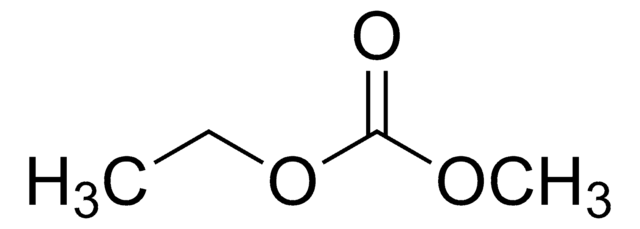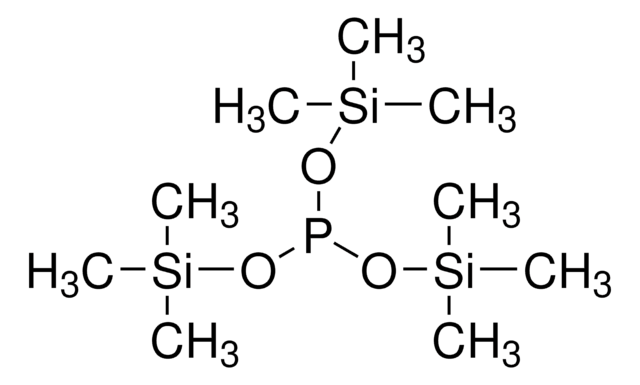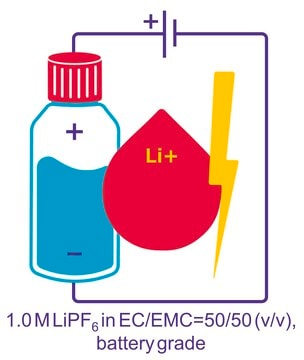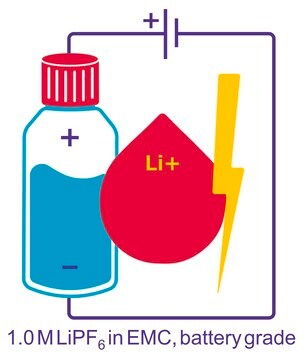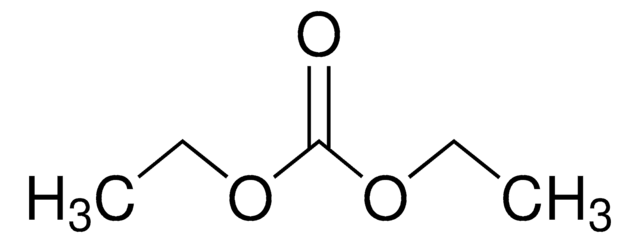809977
Vinylene carbonate
battery grade, 99.5%, acid <200 ppm, H2O <100 ppm
Sinonimo/i:
1,3-Dioxol-2-one, VC
About This Item
Prodotti consigliati
Grado
battery grade
Livello qualitativo
Descrizione
Moisture: <10 ppm
Acid content: <10 ppm
Saggio
99.5%
Stato
liquid
Impurezze
≤100 ppm H2O
≤200 ppm acid
Indice di rifrazione
n20/D 1.421 (lit.)
P. ebollizione
162 °C (lit.)
Punto di fusione
19-22 °C (lit.)
Densità
1.355 g/mL at 25 °C (lit.)
applicazioni
battery manufacturing
Stringa SMILE
O=C1OC=CO1
InChI
1S/C3H2O3/c4-3-5-1-2-6-3/h1-2H
VAYTZRYEBVHVLE-UHFFFAOYSA-N
Cerchi prodotti simili? Visita Guida al confronto tra prodotti
Categorie correlate
Descrizione generale
Applicazioni
Caratteristiche e vantaggi
✔ Improves Anode Performance
✔ Forms Stable SEI
✔ Increases Cycle Life
Altre note
These additives have low water content (less than 100 ppm). Please handle under inert and moisture free environment (glove box). Keep containers tightly closed. Keep away from heat and ignition sources. Store in a cool and dry place. Avoid storing together with oxidizers.
Note legali
Prodotti correlati
Avvertenze
Danger
Indicazioni di pericolo
Consigli di prudenza
Classi di pericolo
Acute Tox. 3 Dermal - Acute Tox. 4 Oral - Aquatic Chronic 2 - Eye Dam. 1 - Skin Irrit. 2 - Skin Sens. 1 - STOT RE 2 Oral
Organi bersaglio
Liver,Stomach
Codice della classe di stoccaggio
6.1C - Combustible acute toxic Cat.3 / toxic compounds or compounds which causing chronic effects
Classe di pericolosità dell'acqua (WGK)
WGK 3
Punto d’infiammabilità (°F)
176.0 °F - closed cup
Punto d’infiammabilità (°C)
80 °C - closed cup
Scegli una delle versioni più recenti:
Possiedi già questo prodotto?
I documenti relativi ai prodotti acquistati recentemente sono disponibili nell’Archivio dei documenti.
I clienti hanno visto anche
Articoli
Dr. Schmuch, Dr. Siozios, Professor Dr. Winter, and Dr. Placke review the challenges and opportunities of nickelrich layered oxide cathode materials. They discuss production processes for the layered oxide cathode materials as well as their chemistry and morphology.
Due to the adverse impact of the continued use of fossil fuels on the earth’s environment and climate, researchers have been asked to develop new approaches for producing power using renewable sources like wind and solar energy
Here, we present a short review of ionic liquid electrolytes used in state-of-the-art rechargeable batteries including high performance and low-cost aluminum batteries, non-flammable Li-based batteries, and high-cycling and stable dual-graphite batteries. We also outline the key issues explored so as to identify the future direction of IL development.
Global Trade Item Number
| SKU | GTIN |
|---|---|
| 809977-2G | 4065272643863 |
| 809977-500G | 4061835532025 |
| 809977-25G | 4061832995922 |
Il team dei nostri ricercatori vanta grande esperienza in tutte le aree della ricerca quali Life Science, scienza dei materiali, sintesi chimica, cromatografia, discipline analitiche, ecc..
Contatta l'Assistenza Tecnica.



